In 2019, an innovative engineering project brought together U of R engineering students, their mentors, professional engineering associations, employees of several community-minded companies, and residents of Star Blanket Cree Nation.
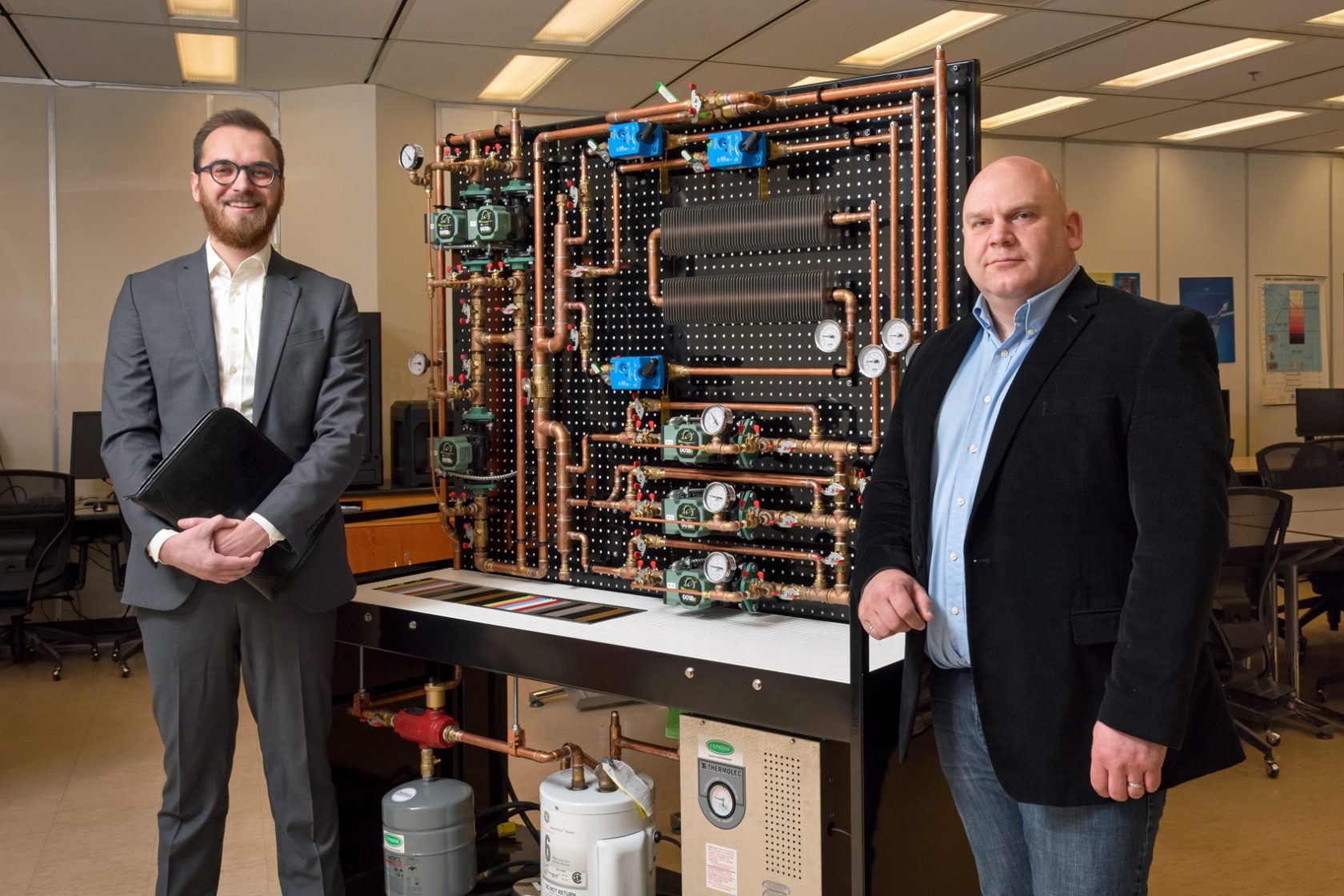
The University of Regina and local firm MacPherson Engineering have enjoyed a 25-year relationship that has seen the two parties collaborate in numerous ways. Together, the partners have developed unique engineering curriculums and embarked on award-winning community projects. The firm has a long history of providing Co-op placements and innovative engineering solutions, mentoring students and hiring U of R graduates.
The strong working relationship between the University and MacPherson Engineering dates back to the company’s incorporation in 1996. In fact, the company’s first project with the University took place that same year. Since then, notes company president Murdoch MacPherson, numerous U of R students have completed Co-op placements with the company, along with summer students from various technical and degree programs. “Presently, 35 per cent of our team started out with MacPherson Engineering as students,” he notes.
Two engineers with MacPherson – Jared Larson and Brad Lulik BASc’16, MASc’20 – have been heavily involved, serving as teaching assistants in engineering labs and as mentors to teams of fourth-year students completing their projects. Larson, a MacPherson Engineering partner specializing in HVAC engineering (heating, ventilation and air conditioning), and Lulik first met at a Regina Engineering Students’ Society mixer, when Lulik was in the second year of his industrial systems engineering undergraduate program.
In recognition of the company’s $15,000 donation toward the College Avenue Campus Renewal project, the University named the mechanical room and several fan rooms in the College Building in the company’s honour. “We appreciated that,” MacPherson says, “but it is the donation of our time and knowledge – particularly to the engineering program – that we are especially proud of.”
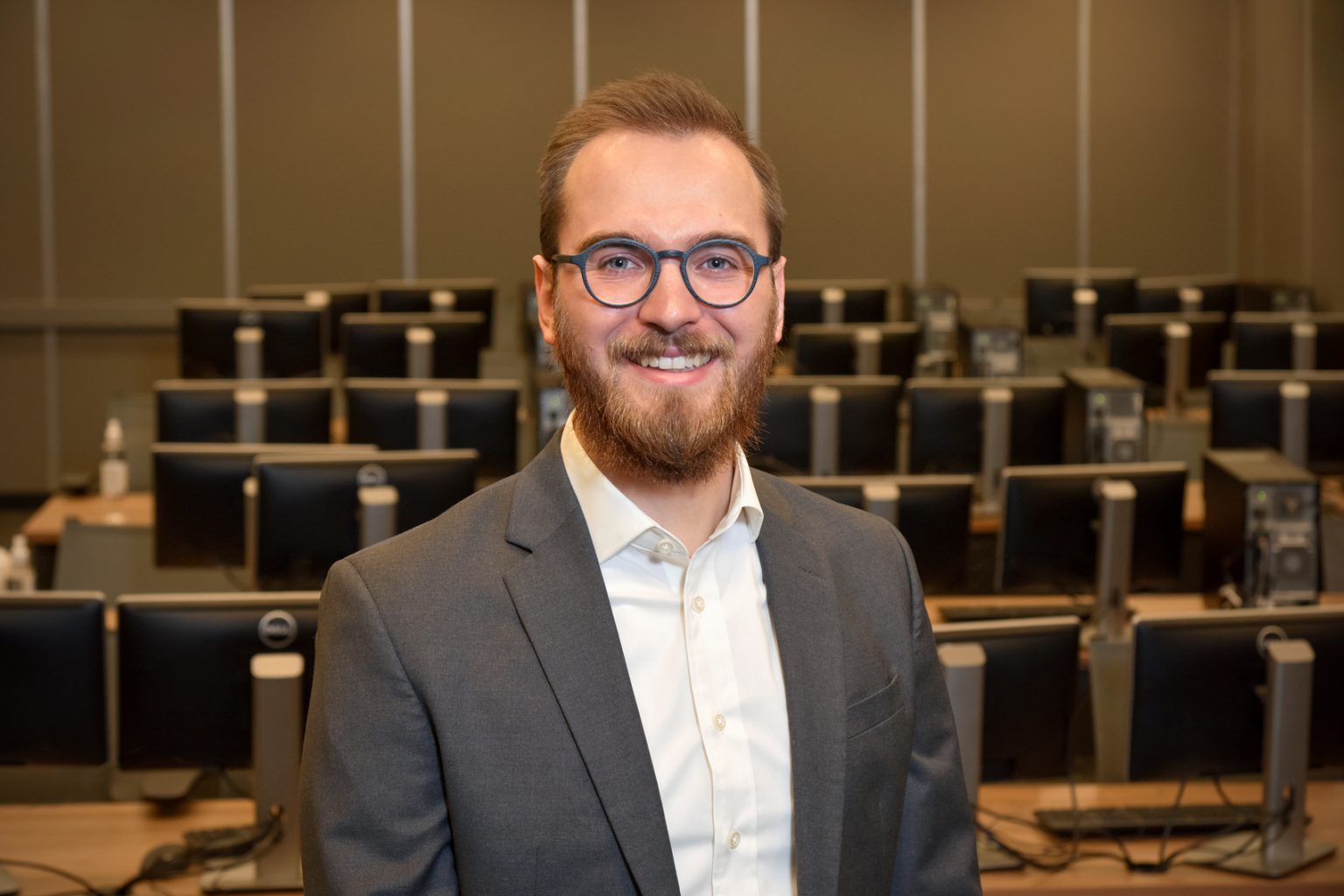
In other professions such as medicine, explains Dr. Esam Hussein, dean of the Faculty of Engineering and Applied Science, students interact with professionals in the field. “We try to do this in engineering, especially through the capstone projects: design projects intended to give students a taste of what real engineering is.”
Larson would later mentor Lulik and other members of a fourth-year student team on their capstone project (a culminating assignment at the end of the academic program) in 2016. The team worked on an energy assessment of the building that houses the Little Souls Daycare in Regina, a non-profit organization with limited financial resources. The project went on to win a global design competition sponsored by ASHRAE, the American Society of Heating, Refrigeration and Air-Conditioning Engineers, a volunteer-run international organization that promotes standards and best practices for the engineering profession.
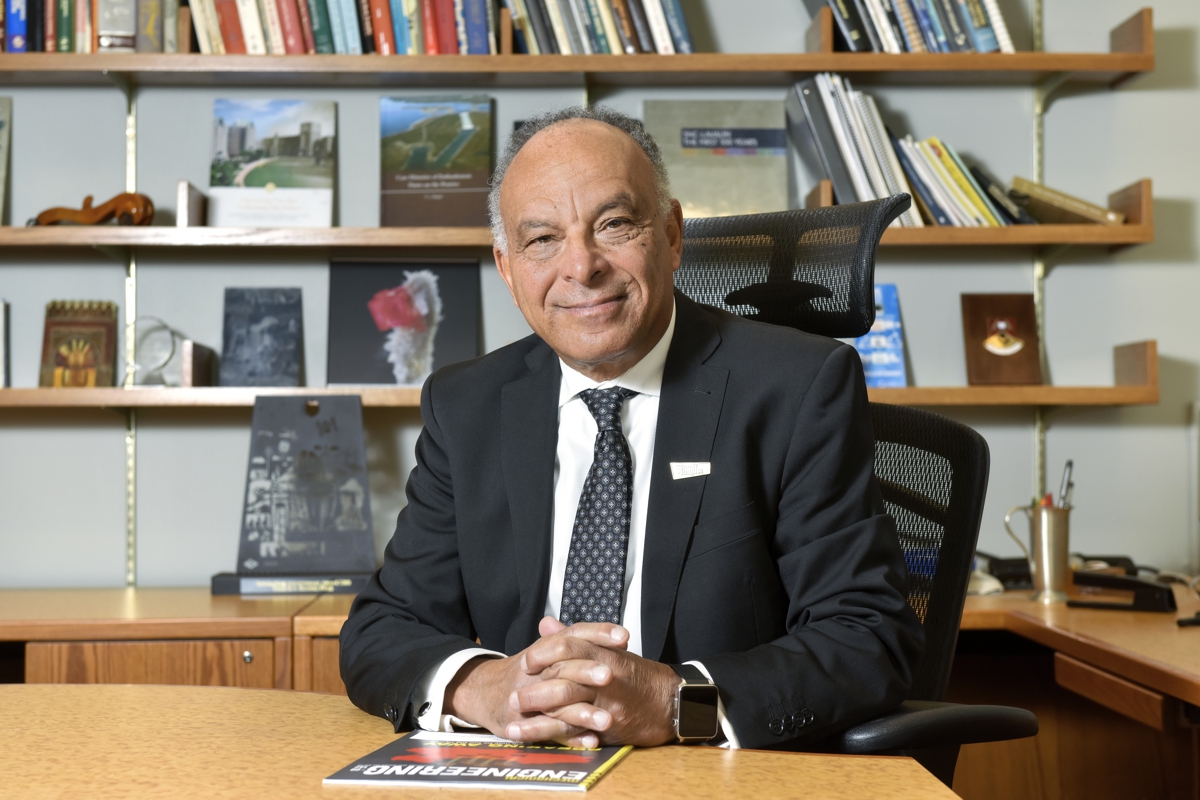
Fourth-year students present their capstone projects to their family, friends and peers on Project Day, one of the highlights of the school year. Because of public health restrictions, Project Day 2020 and 2021 were presented virtually over several days.
At the time Larson was mentoring the student team, he was also serving as student activities chair for the Regina chapter of ASHRAE. The organization was looking for ways to make closer connections with the University of Regina and encouraging the development of a full HVAC course at the University.
Lulik and Larson both agree that working with students is rewarding and a good investment of their time. Lulik recalls how, as a student, he was grateful when members of industry shared their time with him.
As a first step, in 2013, Larson was invited to speak to an engineering class, with a similar invitation extended the following year. The interest shown by students led to a decision to develop a full course. At that point Larson recruited Lulik to provide industry input to help faculty members develop the course. Larson describes the course as a joint venture, with faculty handling the lectures while Lulik and other practising professionals serve as teaching assistants and help students with lab work.
“We designed the course to leave the door open for industry participation, including U of R alumni and representatives from ASHRAE,” says Larson. “We think the HVAC course gives our students a leg up on grads from other universities.”
Lulik and Larson both agree that working with students is rewarding and a good investment of their time. Lulik recalls how, as a student, he was grateful when members of industry shared their time with him. “I understood they were busy,” he says, “but somehow they found time to offer advice and point me in the right direction.”
Lulik is also a vocal champion for the student teams he mentors. Two teams received grants from ASHRAE and APEGS (Association of Professional Engineers & Geoscientists of Saskatchewan) to help them build their own lab apparatus as part of their projects. One of those teams won a Global Excellence Award at an ASHRAE conference in 2020. Currently, he adds, another team has received a grant from ASHRAE to help them design and build a refrigeration system that was part of their capstone project this year.
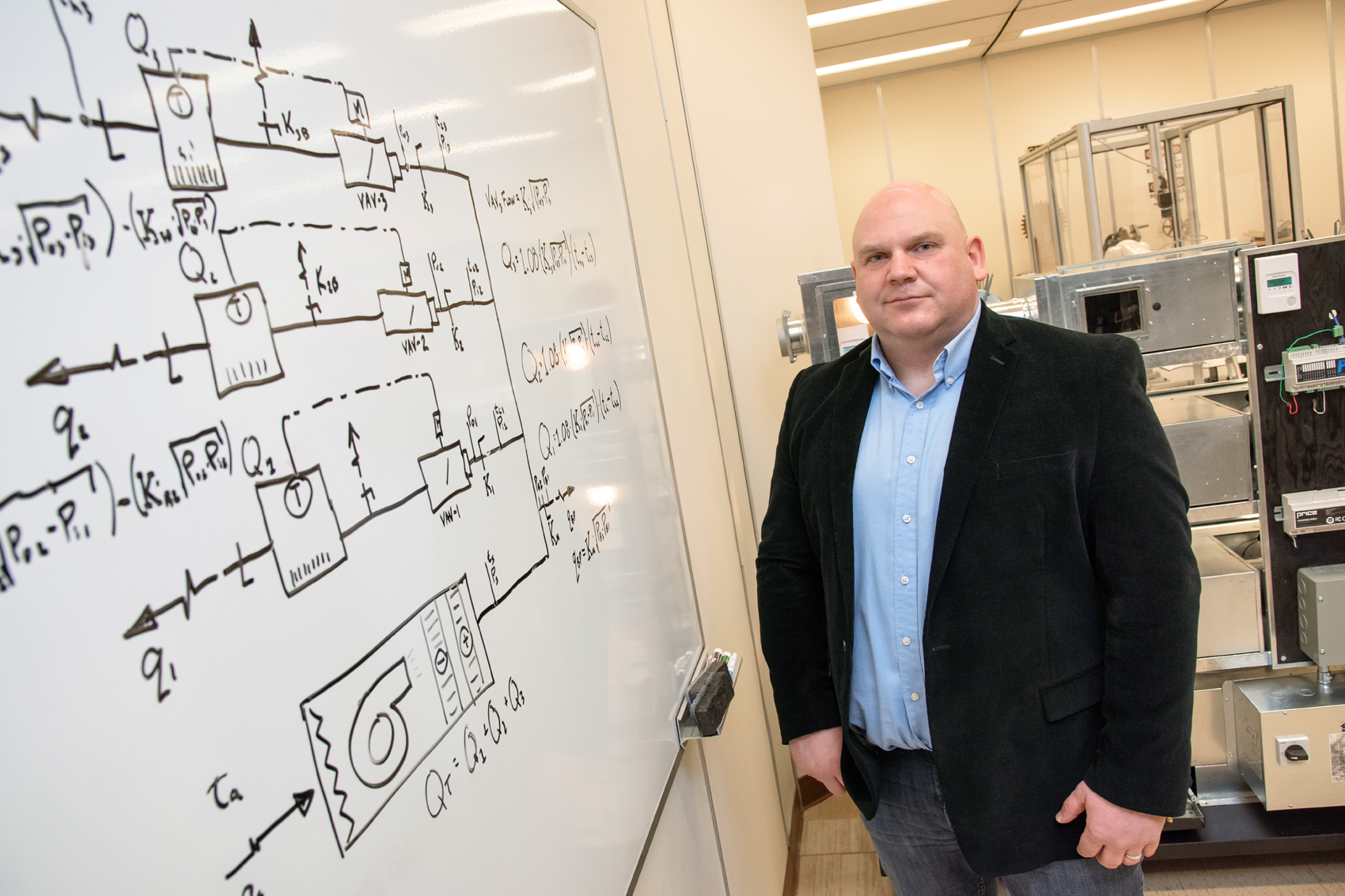
Lulik’s and Larson’s experience and expertise were crucial to the Blanket of Warmth for Our Nations Homes project, an initiative designed to improve housing conditions on the Star Blanket Cree Nation. The project’s beginnings came when Aura Lee MacPherson (Murdoch’s wife), then the office manager for MacPherson Engineering, worked with Wendell Starblanket of the First Nation to organize a ceremony at the Treaty 4 Governance Centre in Fort Qu’Appelle.
A chance remark by Starblanket about mould, high humidity and poor air quality in the basement of his home on the First Nation caught her attention. At his invitation, the MacPhersons visited Starblanket’s home and assessed the conditions in the basement. They recognized that the patented hybrid passive heating technology developed by a Canadian company called RadiantLink had the potential to improve those conditions.
RadiantLink is a heat transfer system that uses a coil attached to the furnace to heat a food-grade glycol mixture that is pumped through plastic tubing attached to wall panels and then covered with drywall. The system turns the walls into passive heat sources.
The MacPhersons realized that the variety of tasks involved in the project would require recruiting other participants. Aura Lee, a strong believer in the United Nations’ 17 goals for sustainable development, including the need to develop partnerships to achieve those goals, set to work finding partners. She began cold-calling potential sponsors and suppliers for the project. “In my heart I was thinking ‘Do not make me tell Wendell this cannot happen,’” she recalls.“To my sheer amazement not one person said ‘No’ to the project.”
The 2018 partnership with the Star Blanket Cree Nation, MacPherson Engineering and Uponor – the panels and tubing supplier – installed the system in Starblanket’s home in just one day. While the Starblankets could feel the improvements in the basement, the next step was to measure what differences passive heating had made to health, safety and comfort. Since Aura Lee MacPherson sees the University of Regina as “craving problems to solve”, she approached the Faculty of Engineering and Applied Science for help.
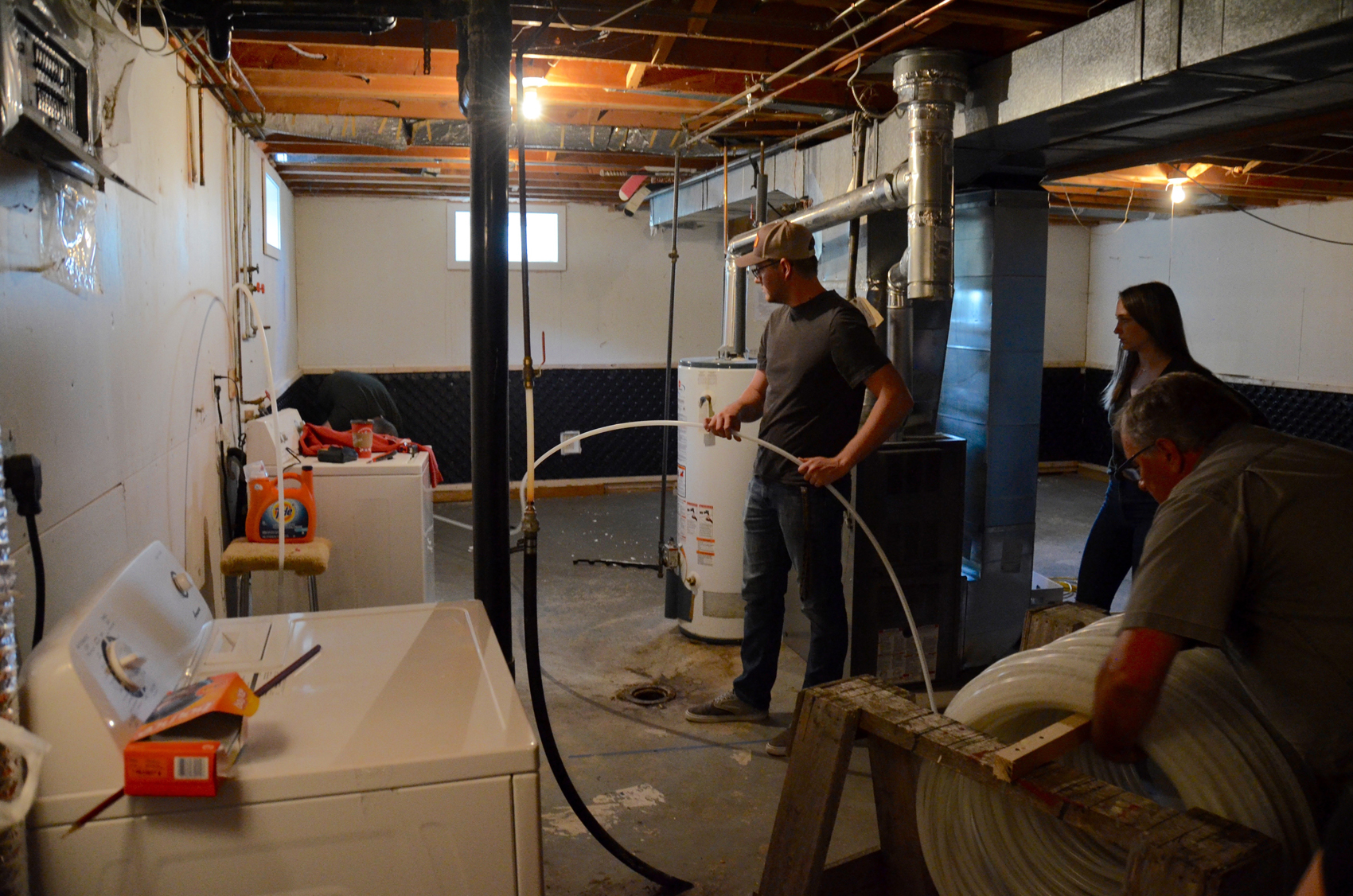
Professor Amr Henni, who was teaching a U of R capstone project course at the time, proposed a project to his students that would involve measuring the conditions in Starblanket’s basement over the winter and comparing them to those in a similar home nearby without the passive radiant heating system.
A team composed of Kennedy Dollard BASc’19, Anton Movchan BASc’19 and Jeremy Shiplack BASc’19 took on the project.
At the beginning of the heating season in October, the team, with Lulik’s guidance, installed data loggers and sensors in two basements to: a) monitor temperatures and humidity and b) measure natural gas and electricity consumption. Cables were installed from a data collection point inside to a fixture outside the homes so that the students could download the data every few weeks without having to enter the homes. In February 2019, the team began preparing their Capstone presentation. They found that the basement with the radiant heating system was 3.5˚ C warmer than the basement without the system, and surface humidity reached a high of 41 per cent in Starblanket’s basement, compared with levels as high as 55 per cent in the other home. The lower humidity meant mould would be less likely to form in the space with radiant heating. They also found that the radiant heating system did not increase natural gas consumption, but instead reduced electricity consumption by almost $900 a year, since space heaters were no longer needed in the basement.
“The best part of the entire project,” Dollard says, “was seeing something you designed go in and make a difference. When I was choosing a field of study, I wanted to choose something that would help people – that would have an impact.
As the second part of their project, the team also performed energy modelling in a similar home and prepared schematics and sizing requirements for a second installation. By making some simple changes, such as replacing copper fittings with PVC piping, they trimmed 30 per cent from the cost of materials for the second installation. “Brad (Lulik) made sure we had all the elements documented; that we had a well-rounded project,” Dollard observes. “We could not have done it without his guidance.”
Larson says when the team made their Project Day presentation, he could see and feel the pride they had in the work they had done, knowing that the project made a positive difference. The student team then presented a written proposal for a second project at Star Blanket. With a $5,000 grant from APEGS and monetary and in-kind support from MacPherson Engineering, Uponor, Fries Tallman Lumber and Anaquod Plumbing and Heating, the second installation was completed in June 2019.
The members of the student team assisted with the installation, a postscript to the completion of their graduating year. While the work was underway, a community lunch was held on the First Nation, where people could learn more about the installation, assist with the work or visit with others. In a video produced afterwards, Chief Michael Starr said the project was about connecting, partnering and making each other feel welcome.
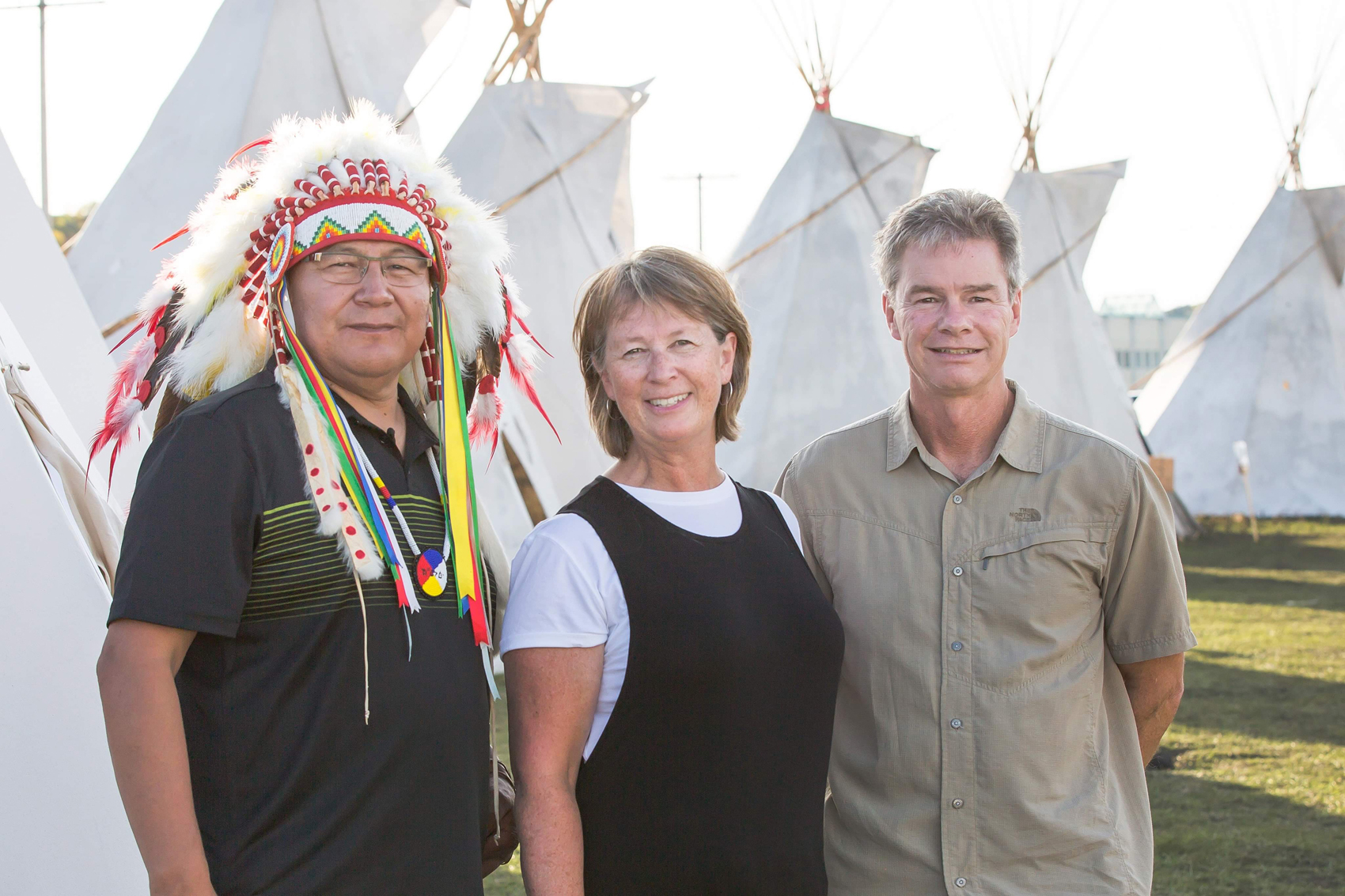
“The best part of the entire project,” Dollard says, “was seeing something you designed go in and make a difference. When I was choosing a field of study, I wanted to choose something that would help people – that would have an impact. I think there has been a shift in the last 10 years within the profession, with more emphasis on how engineering can serve people.”
The Blanket of Warmth project created another development opportunity, where representatives from the University and MacPherson Engineering travelled to Chief Payepot School north of Regina to host an engineering workshop, discuss the applied sciences and share the story of the work done at Star Blanket with the students there. While the workshop was an optional activity for her, Dollard says it was important for her to be there. It is important to have role models who are a reflection of yourself, she says, and having visible female role models in a field dominated by men was pivotal in her decision to pursue engineering.
Dean Hussein says the Star Blanket project is the one that is closest to his heart, because it shows young people what engineering is about, while solving a real problem affecting people’s everyday lives. “We may not always notice it in operation, but our quality of life depends on it, for example, in the water, heat and power we rely on,” he says.
Soon after the project was completed, the United Nations Regional Centre of Expertise on Education for Sustainable Development in Saskatchewan recognized the project at its award ceremony for sustainability initiatives. The project is also earning accolades from the industry. The team was honoured to receive the APEGS 2021 Exceptional Engineering/Geoscience Project Award at the organization’s annual recognition event on April 30 and Sustainable Architecture & Buildings magazine selected the project for a 2021 Canadian Green Building Award.
“The best part of the entire project,” Dollard says, “was seeing something you designed go in and make a difference. When I was choosing a field of study, I wanted to choose something that would help people – that would have an impact. I think there has been a shift in the last 10 years within the profession, with more emphasis on how engineering can serve people.”
MacPherson Engineering is currently working with Henni and four capstone students on a continuation of the project, wrapping the plastic tubing around the windows in a renovated home and collecting the data over the winter months. “The results look promising,” says Aura Lee MacPherson, “and we expect to soon know if this should be added to the Blanket of Warmth for Our Nations Homes. We continue to improve the system and look for grants to improve homes with poor air quality on Star Blanket Cree Nation.”

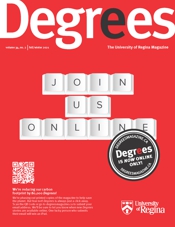

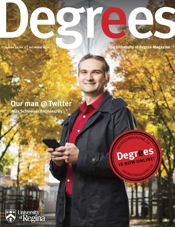
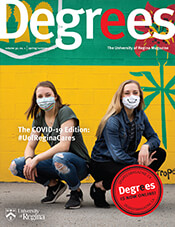


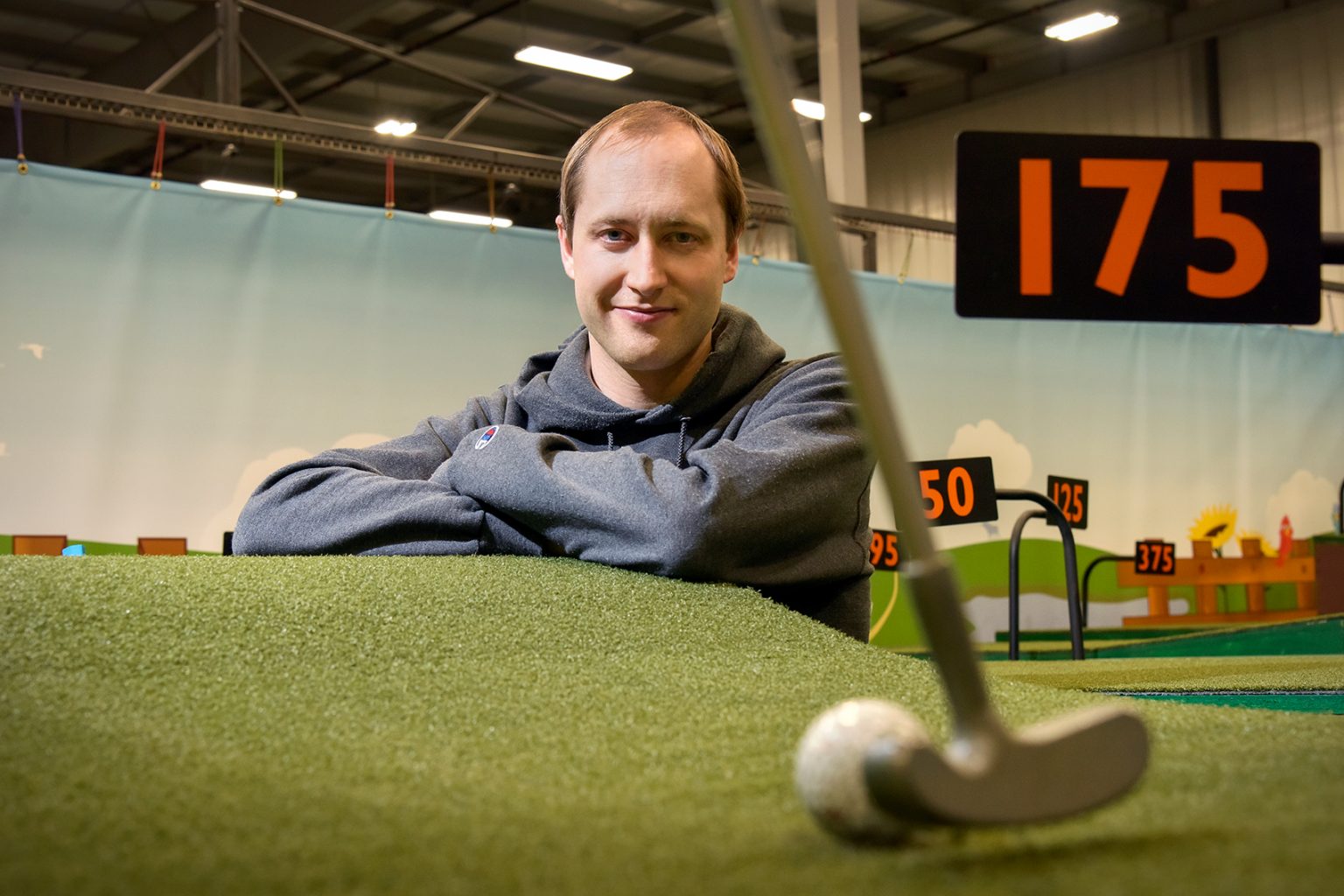 OneShot Golf's chief technical officer Tim Borgares. He says that the U of R is well represented in the company. In addition to the three principals, OneShot Golf employs graduate Denis Leanca BSc'20 and, at the time of writing, had four U of R co-op students and interns working for the firm.
OneShot Golf's chief technical officer Tim Borgares. He says that the U of R is well represented in the company. In addition to the three principals, OneShot Golf employs graduate Denis Leanca BSc'20 and, at the time of writing, had four U of R co-op students and interns working for the firm.
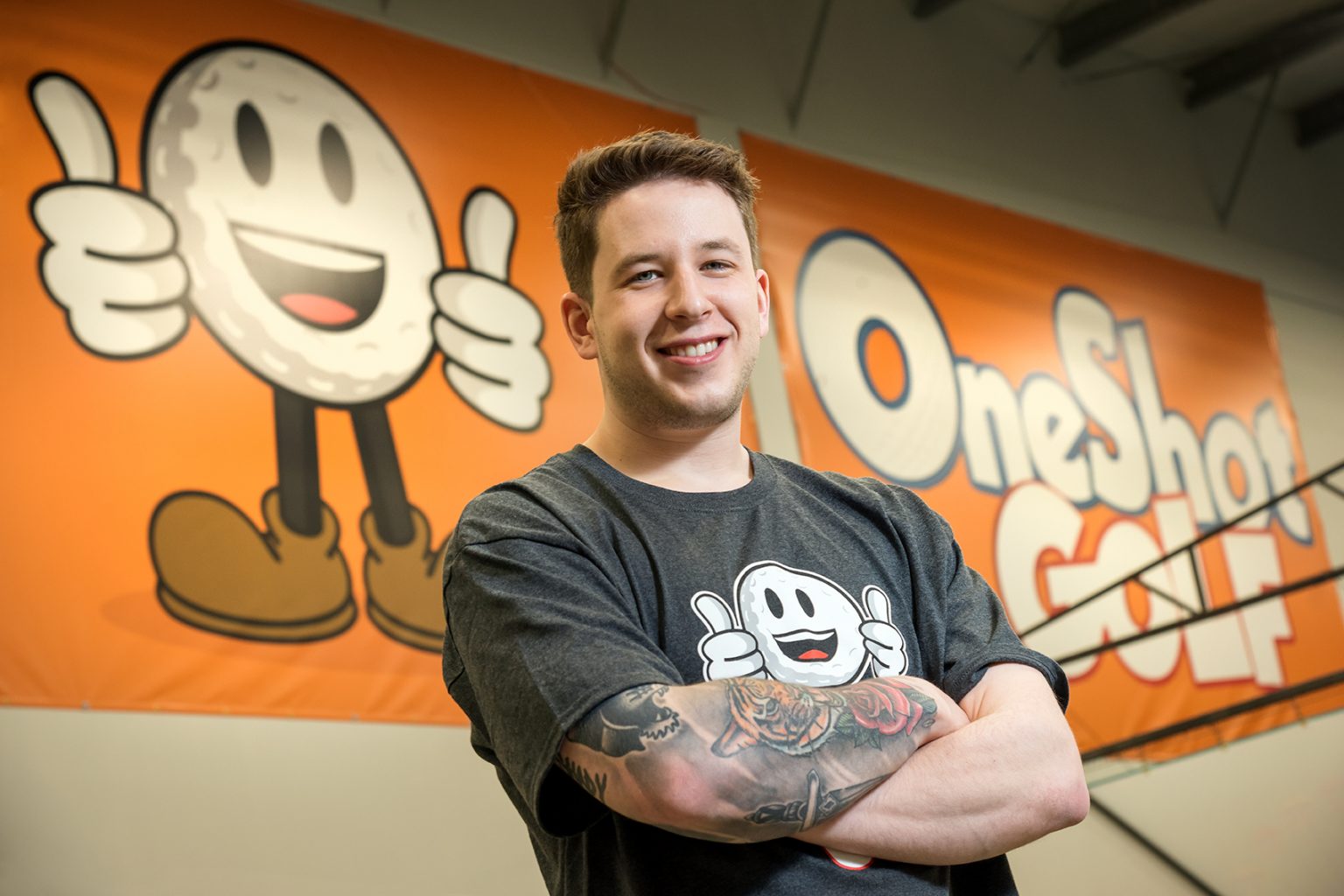 Ryan Donohue works on the mobile app and internal management dashboard for the company.
Ryan Donohue works on the mobile app and internal management dashboard for the company.
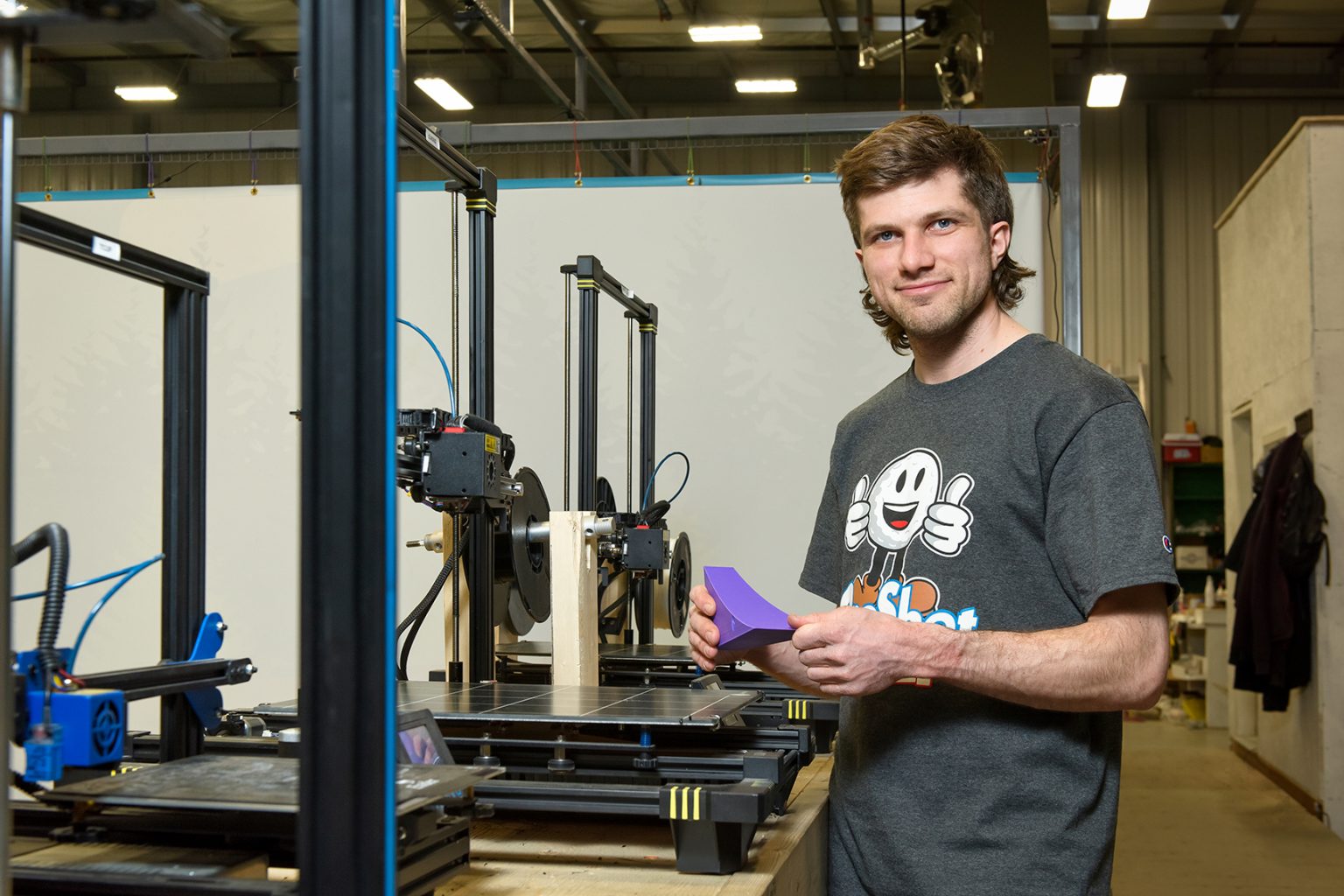 Andrew Burant serves as project manager and robotics administrator for OneShot Golf.
Donohue says that his time at the U of R also taught him time management and prioritization. "Often in startups,
Andrew Burant serves as project manager and robotics administrator for OneShot Golf.
Donohue says that his time at the U of R also taught him time management and prioritization. "Often in startups,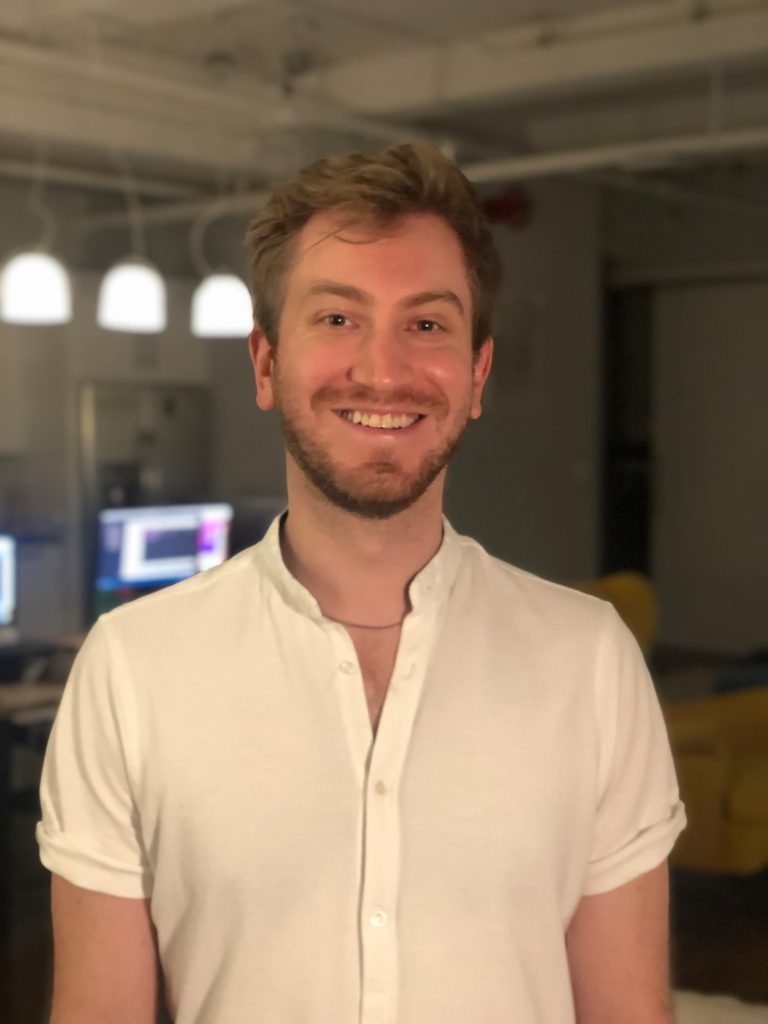 Jordan Howlett earned his master's degree from the U of R in 2013. He is one of the co-founders and engineering manager for Bunch, an app that allows people to video chat with friends while playing mobile games. The company has grown into a 30-person operation with offices in Waterloo, Toronto, Vancouver, New York and San Francisco.
Jordan Howlett earned his master's degree from the U of R in 2013. He is one of the co-founders and engineering manager for Bunch, an app that allows people to video chat with friends while playing mobile games. The company has grown into a 30-person operation with offices in Waterloo, Toronto, Vancouver, New York and San Francisco.
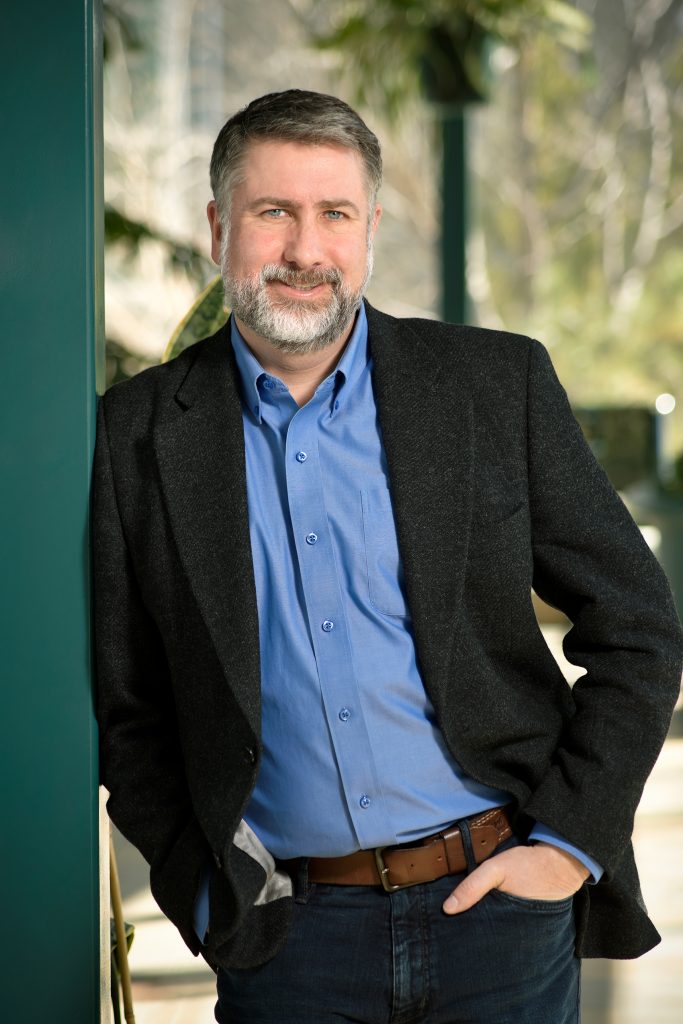 Dr. David Gerhard, head of the U of R's Department of Computer Science, says he often hears about the success stories of graduates, like the four profiled in this story.
Dr. David Gerhard, head of the U of R's Department of Computer Science, says he often hears about the success stories of graduates, like the four profiled in this story.